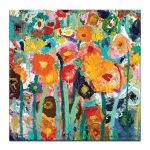Whether upgrading a single room within the home or decorating the entire property, the colour schemes will play a central role in the interior design makeup. Therefore, it’s essential that you make the right decisions.
The following tips will encourage you to consider the most significant elements, which should result in calculated choices every single time. Here’s all you need to know.
#1. Light Colours Make Rooms Look Bigger
If, like most people, you dream of a larger property that you can’t afford, light colour schemes are your best friend. The light shades, such as whites and creams reflect the light to make the rooms appear bigger than what they are while additionally generating a natural tone.
As well as lighter walls and ceilings, choosing white tables and furniture can have a telling impact on the overall look. When supported by a positive layout and well-dressed windows, the rooms can look bigger and better than ever. Still, the light colours are the main feature.
Light colour schemes don’t have to be void of personality. Patterned wallpaper designs can be used for excellent results while different shades of a light colour can have a big impact too. Meanwhile the accessories, table decorations, and house plants can be used to great effect.
#2. Warm/Cold Shades Impact The Perceived Temperature
You can’t simply rely on an orange colour scheme to warm you up in the middle of winter or a cool blue to compromise for a lack of air conditioning in the height of summer. Nonetheless, there is no question that the colour schemes can influence the perceived temperature of a room.
Adding a few warm colours (oranges, reds, etc.) can trick the mind into thinking it’s a little warmer, especially as the colour schemes are the first thing you notice when entering a room. If you are in a warm room, bringing it down with cool blue and silver undertones can work wonders.
#3. The 60-30-10 Rule Achieves Balance
Establishing a sense of balance is crucial for any interior design transformation, irrespective of the aesthetic and atmosphere that you want to achieve. The 60-30-10 rule is a simple strategy that can achieve truly stunning results. It can be used in the lounge, bedroom, kitchen, or bathroom.
The simple concept revolves around the idea of using three primary colours for the palette of the room. The most dominant colour will take up 60% of the room’s design, while the supporting colours take up 30% and 10% respectively.
Your choice of dominant colour is likely to be a neutral tone or a subdued hue. The main supporting colour can take up borders and furniture surfaces, while the smallest colour is best reserved for accessories to accentuate the room and add a distinct personality without overawing the space.
#4. Feature Colours Set A Mood
In addition to influencing the perceived temperature of the room, the colour palette can set the tone of the space, evoking an emotional response from the second you start interacting with it. The colour palette can invigorate, relax, or create a range of different energies. Don’t be afraid to use it.
Shades of light purple, for example, can built a relaxed mood and sense of luxury. This is a very popular option for bedrooms. Conversely, bathrooms often choose a white or blue colour scheme to produce clean, calm atmospheres. Whatever energy you want to create, consider the colour choices.
#5. Cohesion Throughout The Home Is Key
Whether transforming the design of your home or a client’s, every room should tall its personal story. Then again, it’s equally important to ensure that those stories are linked. Moving through a muddled property that contrasts traditional and modern or cluttered and minimalism can feel confused.
Connecting rooms should use complementary tones rather than stark contrasts. Using neutral tones in hallways can be a great way to make the transition smoother while using neutral colours with one feature wall in each room is another popular tactic.
Either way, moving from blues to purples rather than blues to bold reds will naturally feel less harsh on the eyes and mood. You want to establish a sense of consistency throughout the property, and the colours are the best starting point. A consistent style of decoration will help too.
Conclusion
It’s almost impossible to master the concept of interior design without paying special attention to the colour schemes. Use the five colour selection tips above throughout your planning processes, and you won’t go far wrong. The home of your dreams awaits.






